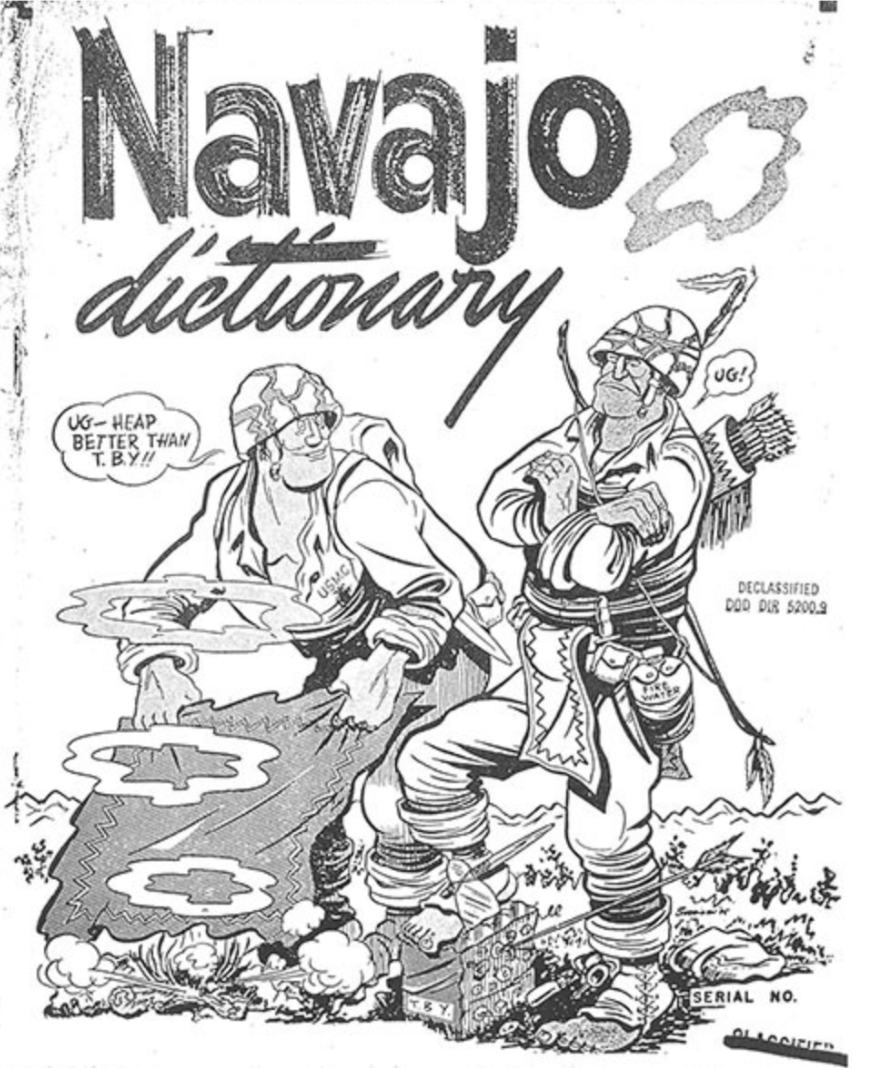
Navajo Code Talkers' dictonary~June 15, 1945~DEPARTMENT OF DEFENSE DIRECTIVE 5200.9
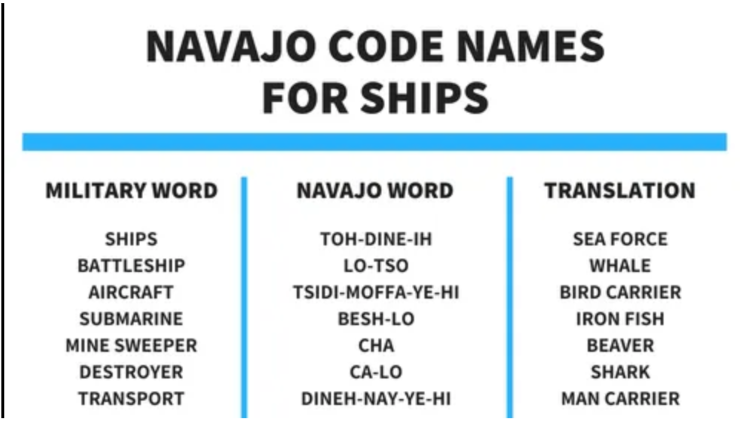
Navajo Code Names for Ships~World War 2~The Republic
The Code
Over the course of 13 weeks, the code was developed, practiced, and committed to memory. The code ranged from simple letters (“A” could be communicated as the Navajo words for ant, apple, or axe) to vehicles (Dive bomber = “chicken hawk,” submarine = “metal fish”) to direct or approximate translations of hundreds of verbs such as capture, escape, entrench, flank, halt, and target. Once the code was complete, the Code Talkers became invaluable communications assets. As the war went on, some 400 Navajos were recruited and trained in the code.
“This Major took us into a great big room and he said, ‘you guys are going to have to make up a code in your own native language,’ that’s all he said. He left, closed the door behind him and locked the door. We didn’t know what to think, you know? What does he mean by making a code in our own language? We sat there for about three or four minutes thinking, how are we going to develop this code?”
—Chester Nez, Navajo Code Talker, National Museum of the American Indian interview, 2004

Navajo Code Talkers' dictonary~June 15, 1945~DEPARTMENT OF DEFENSE DIRECTIVE 5200.9

Navajo Code Names for Ships~World War 2~The Republic
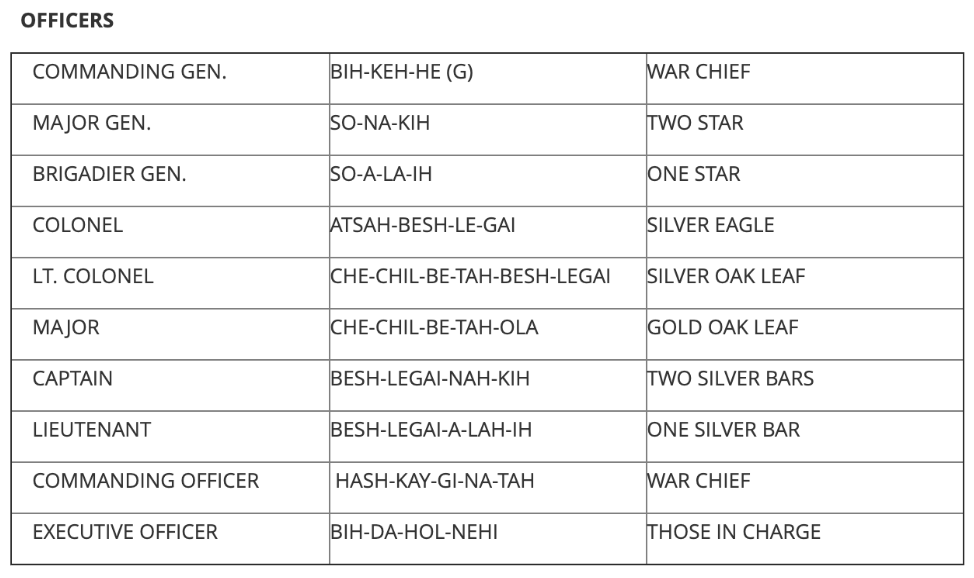
Navajo Code Names for Officiers~World War 2~The Republic.
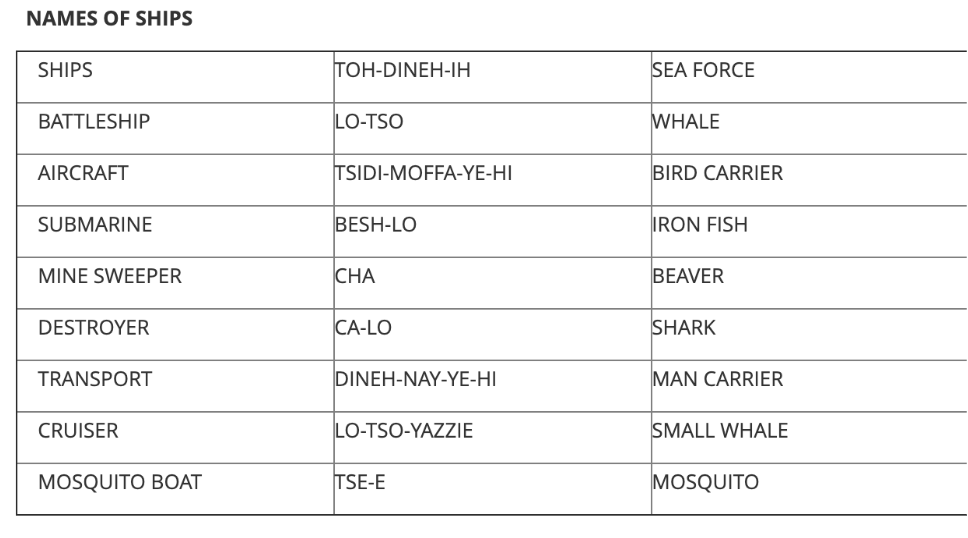
Navajo Code Names for Ships~World War 2~The Republic.
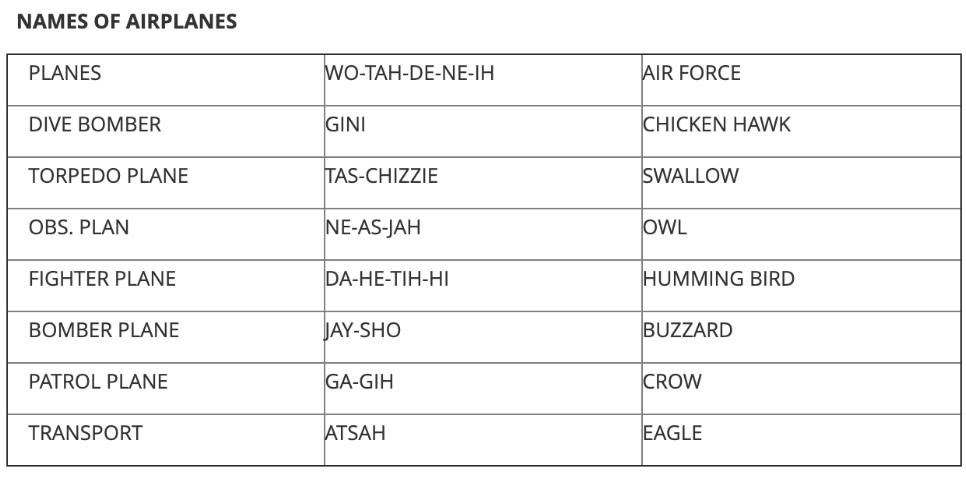
Navajo Code Names for Airplanes~World War 2~The Republic.
“The Japanese tried, but they couldn’t decipher it.... Not even another Navajo could decipher it if he wasn’t a code talker.”
-Chester Nez: World War II Original Navajo Code Talker
Early on the implementation met with 3 main oppositional views from military officers.
(1) advantages of speedy coded messages were unnecessary since urgent messages were not sent in code
(2) reluctance to put the fate of an entire unit into an unknown foreign language and
(3) limited numbers of available recruits= overall theme of “distrust in the Navajo abilities to perform the task”.
Racial issues were not a factor as it was for African American soldiers, but they would still be inferior counterparts to white soldiers.